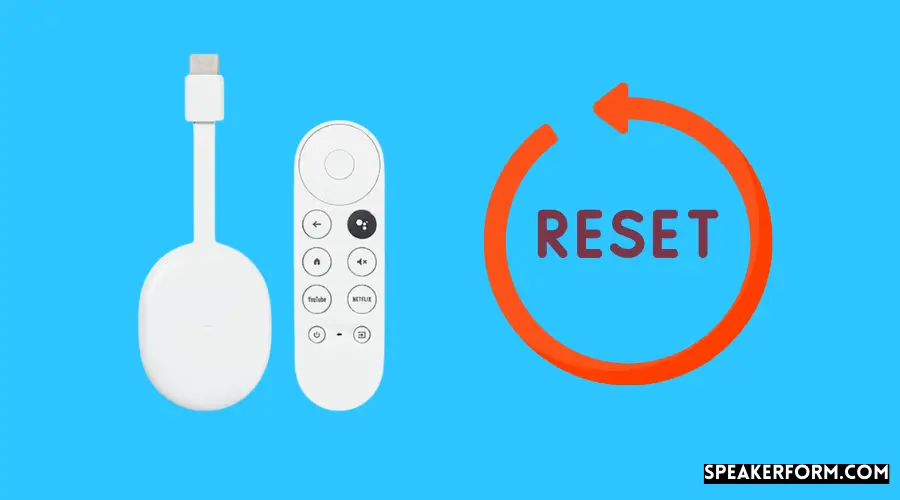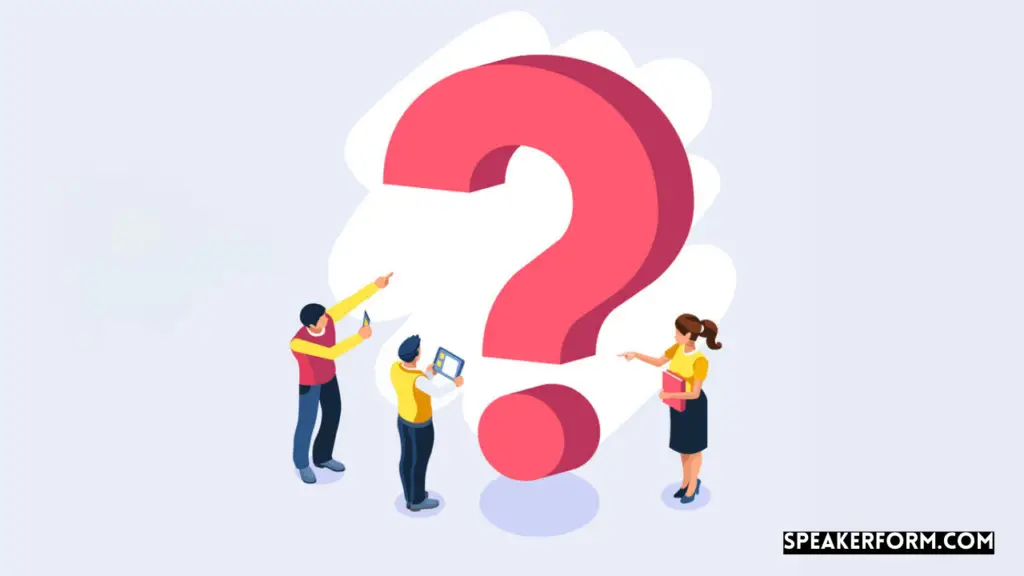My buddies and I had decided to see a movie at my house a few days before. Unfortunately, as we were all seated for a fun-filled evening, the following occurred: my Chromecast just refused to connect to the WiFi network. Even if we were streaming the movie, it would continue to buffer every 2 minutes after that. Overall, it was a frustrating and time-consuming experience.
For a time, I was unsure if Chromecast would operate without an Internet connection, but I was determined not to let this minor glitch spoil the movie night that we’d been looking forward to for months. As a result, we set out to investigate any conceivable explanations for why the Chromecast was refusing to connect.
In the process, we were able to come up with several answers that we would know where to turn without exploring any further if this problem ever arose again. To discover out what worked for us and what will be your saving grace, continue reading this article.
If your Chromecast isn’t connecting, check for a network problem first. Try restarting or factory resetting your Chromecast if it does not solve the problem. However, if this does not result in your Chromecast connecting, you should try enabling Multicast on your Router.
Check the Chromecast connection.
The majority of the time, it’s your network that’s producing issues with your Google Chromecast.
You should disconnect and reconnect the Chromecast from the USB slot if it is not communicating with you. If it is not communicating with you, you should try again later. After reconnecting your device, you will be able to view the name of the device and the WiFi network that it is now connected to. Local Area Network Access Errors might occur due to problems with the network.
To double-check the network settings, perform the following steps:
WiFi settings may be found in the Google Home App, Chromecast, and the Chromecast Settings menu.
You will be able to view the name of the network and the signal strength under WiFi.
Ensure that your casting device is within range of the WiFi router and that there are no obstructions between the signals flowing from the Router and your device if your signal strength is poor.
In addition, a weak WiFi connection may result in the Source Not Supported error, which you may misinterpret as a more serious problem than it is.
If your Chromecast was not experiencing any network difficulties, there is no reason to be discouraged. Continue reading to find out which of the remaining options is the best fit for you.
Ensure your Chromecast has sufficient power
Personally, this was the only option that worked for me because my television was an older model that couldn’t support the Chromecast being linked straight to it via HDMI.
Suppose your TV is like mine and is simply incapable of providing enough power to your Chromecast for it to function properly. In that case, you may find yourself the victim of power cycles that occur at random intervals.
The most common reason for this is that the Chromecast is directly linked to the USB port on your television, and your television cannot handle the additional load.
This is not a very common problem because most televisions can supply adequate power to casting devices. However, if this is not the case, you can resolve the problem by connecting your Chromecast device to the USB power brick that comes with the box, which will offer sufficient power.
In addition to avoiding any connection difficulties, it prevents any power losses that you may otherwise experience.
Power Cycle your Networking Devices
It’s possible that resetting all of your network equipment will solve your problem completely.
First and foremost, we must disconnect and rejoin all of the currently connected devices to your Chromecast device. In addition to the Chromecast device, this includes the WiFi router and modem.
After disconnecting, let it take a few minutes to settle down. Following this step, reconnect all of your devices to the network and wait for the network to be fully operational again. When the panel lights on your modem cease blinking, you will know that you have a stable network connection.
Your Chromecast may continue to disconnect from the internet.
That’s all there is to it. Attempt to cast from your smartphone once more after your Chromecast has been restored to full operational status.
Restart your Chromecast

Performing a hard reset on your device will allow it to reboot and may be able to resolve some internal issues, such as freezing or crashing of connected applications.
To restart your Chromecast from your smartphone, follow these steps:
Availability of the Google Home App, Chromecast, and other settings Reboot
To achieve the same result from your power source, follow these steps:
Remove the cable from your Chromecast, and then turn it off. Remove the power cable from the Chromecast and wait for a minute or two before reconnecting it.
Update your Chrome Browser
As you may be aware, the apps on your phone are updated from time to time, either to address any flaws that may have happened in the previous version or to provide some new features that may make the user experience more pleasant and engaging overall. In addition, the longer you wait to download these updates, the more problems will arise with associated apps and devices.
For this reason, you must ensure that your Chrome browser is up to date at all times; otherwise, it is possible that your Chromecast device isn’t performing to its full potential.
Enable Multicast on your Router
Ensure that Multicast is enabled in your Router’s settings; if not, make the necessary changes. Multicasting is a very effective method of saving data since it avoids various wireless collisions that could occur. When you use various media streaming apps or devices simultaneously, this has a significant impact on the overall quality of the streaming experience.
The following commands must be entered in Global configuration mode and Interface configuration mode, respectively, on your Router to enable Multicast on that device:
You’ll need to use the IP multi-routing command to enable this feature in the Global configuration mode. Your Router will now be able to handle multicast traffic. To have multicast routing in a functional setup, each interface must be entered, and the PIM must be configured.
The command is PIM is used to accomplish this, and it accepts either the dense-mode or the sparse-mode options. Once this is completed, IGMP is automatically enabled on the affected interfaces.
Router1>enable
Password:
Router1#configure terminal
Enter configuration commands, one per line. End with CNTL/Z.
Router1(config)#ip multicast-routing
Router1(config)#ip pim rp-address 192.168.1.2
Router1(config)#interface FastEthernet 0/0
Router1(config-if)#ip address 192.168.1.2 255.255.255.0
Router1(config-if)#ip pim sparse-dense-mode
Router1(config-if)#exit
Router1(config)#ip pim send-rp-discovery scope 16
Router1(config)#exit
Switch the Frequency Band
If you’ve tried these solutions and are still experiencing network problems, you might want to experiment with different WiFi bands. For example, if your gadget was initially operating on the 2.4 GHz band, try switching it to the 5 GHz frequency and seeing any discernible change. This can be accomplished by going to the Google Home App Chromecast Settings WiFi Forget this network.
Then, returning to your available WiFi band options, select the alternate network that best meets your needs. Alternatively, if you’re having WiFi issues, you can connect your Chromecast by connecting it using your Mobile Hotspot.
Factory Reset your Chromecast

There are two techniques for factory resetting your Chromecast, whether it is Generation 1, Generation 2, or Generation 3.
The first method is to use the Google Home mobile application. This method is universally applicable, and you only need to follow the procedures outlined below:
Google Home app Chromecast Settings More Settings Reset the device to factory settings.
The second approach, which involves factory resetting the Chromecast straight from the device itself, will be discussed separately for the Chromecast Gen 1 and Gen 2 devices. ***
Factory Reset your Gen 1 Chromecast
To reset your Gen 1 Chromecast directly, all you have to do is:
- Turn on the television to which your Chromecast is connected.
- Long-press and hold the button on the back of the device until a solid LED light begins to blink.
- The television will go black, and your casting device will be forced to reset.
Factory Reset your Gen 2 Chromecast
To reset your Gen 2 Chromecast directly, this is what you need to do:
- As with the previous step, switch on the television to which the device is connected.
- Press and hold the button on the back end until an orange light constantly flickers for several seconds. •
- Do not let go of the handle until the white light appears.
- Once the white light begins to illuminate, release the button and let your Chromecast restart itself.
Contact Google Customer Support
Please do not hesitate to contact Google Customer Support if all else fails and none of those mentioned above approaches have been effective. Their instructions will take you through the actions you need to take to get your Chromecast back up and running again.
Final Thoughts on How to Fix Chromecast Not Connecting
Now that you know what to do if your Chromecast fails to connect, there are a few things to keep in mind as you attempt to resolve the problem.
Check to see whether your modem has a backup battery when you’re power cycling your network device. It is necessary to press the reset button on the modem or to remove and re-install the battery if this occurs.
Whenever you attempt to resolve a connectivity issue with your Chromecast, the range likely needs to be increased if the signal strength is weak. You can get ahead of this by connecting your Chromecast to the TV set using the extender that comes with the box (included in the package).
Also, keep in mind that resetting your Chromecast will remove all of your data from the device, and you will have to start over from the beginning with the configuration. It will appear as if you have just unpacked the item from its packaging.
Make sure that both your smartphone (or any device from which you are casting) and your Chromecast are connected to the same WiFi network before you begin casting.
Frequently Asked Questions

How do I connect my Chromecast to my WiFi?
Go to Google Home App → Chromecast → Settings →Device Settings → WiFi
How do I relink my Chromecast?
Please navigate to the Bluetooth settings on your device and switch it on. Then, check the Google Home App to see if the device has been properly connected. If it doesn’t work, check your WiFi settings again, reboot your Router, or factory reset the Chromecast to see if that makes a difference for you.
How do I screen mirror with Chromecast?
Check to see that all devices are linked to the same WiFi network. Then, go to the Google Home app and select the Chromecast device you want to mirror, Cast my screen, Cast screen, and Start now from the drop-down menu.
How do I make Chromecast discoverable?
Chromecast should be enabled. Connect your smartphone, Chromecast, and any other devices connected to the same WiFi network as your computer. Double-check to see if Bluetooth is enabled.

